Sod Delivery!
You’ve got dreams of an emerald green yard and are excited for the delivery of your new sod. Proper preparation ahead of receiving delivery or pick up of sod can be beneficial for the success of the lawn. Let’s take a look at what you need to be ready for delivery day.
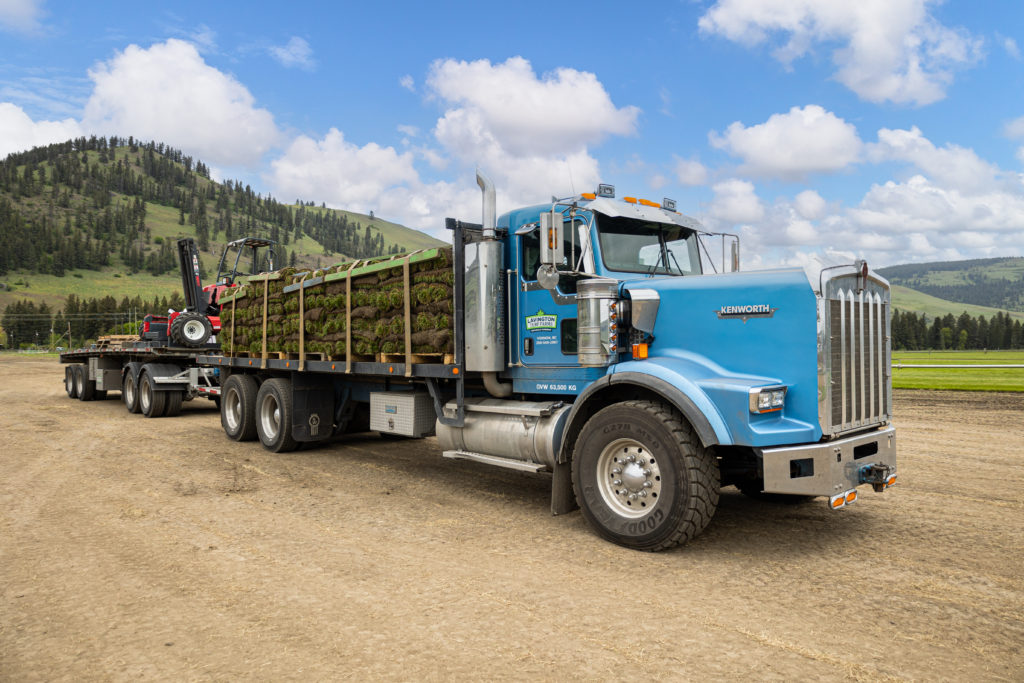
It’s Important To Be Prepared For Your Order
Whether you decide to take care of the sod installation yourself or have us professionally install it, the area that you’ve chosen for the sod needs to be properly prepped and ready before you get sod.
- Prepping the area for the sod – removing all debris, weeds, rocks to the area
- Installing the sod immediately – timing is key to stop any damage to sodCreating a water plan – we can assist with your water plan if needed
- Grass lifting – watch for grubs and water puddles that could lead to root damage.
What Happens When You’re Not Prepared For Your Sod Order?

The sooner your fresh sod goes from the farm to your soil, the better, so it doesn’t dry out. The same day is best. Don’t rush the preparation stage as it will save you time and headaches in the long run.
- Sod can spoil– it’s important to get that sod installed as soon as possible to keep it lush
- Sod can start to get discoloured – a sure sign things have taken too long is when you lose the grass’s green brilliance
- Sod can potentially die – prepping is key to ensure no sod goes to waste
Tips For Prepping Your Area For Sod Installation
It’s like most things, the better prepared you are the less chance for errors and mistakes. Here are a few more tips to make sure you have everything needed for a successful sod installation.
- Test the soil – This test will tell you if your soil’s pH is too far off to grow grass. Plants generally prefer soil that’s relatively neutral in pH.
- Clear the space from debris – unwanted debris and obstacles will cause unevenness
- Get rid of unwanted grass and weeds
- Grade the soil – most minor grading can be done on your own while major work may require more equipment
- Add a layer of topsoil
- Till the soil
- Water the soil
Get Your Sod Directly Through Our Farm Today
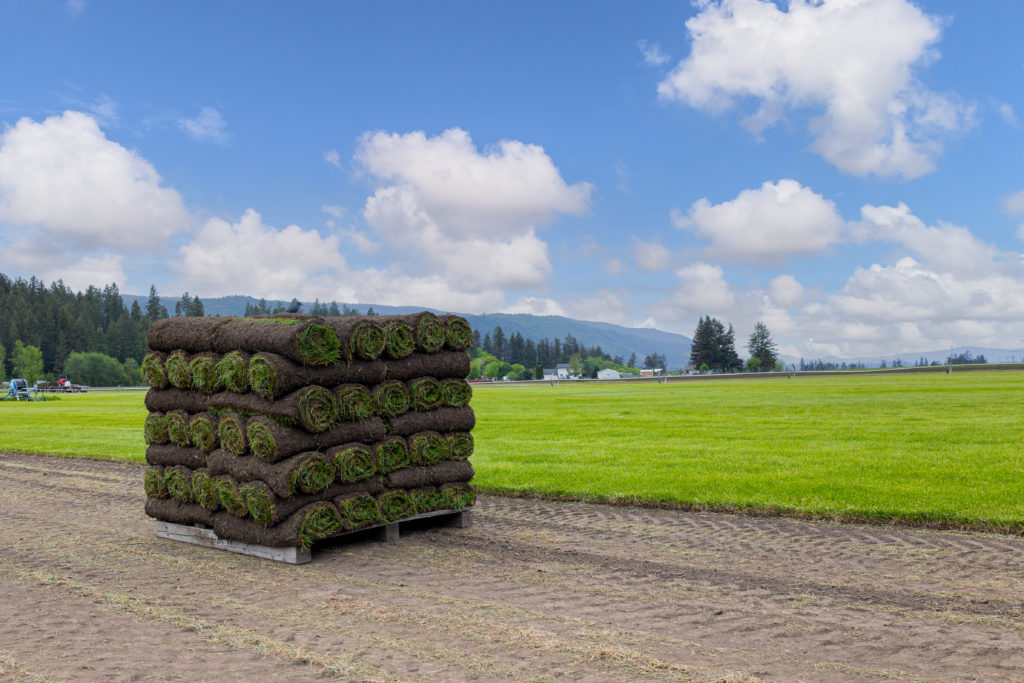
Need advice on how to create a watering plan to work with your environment? Let us know and we can assist with this. We service the following areas:
- Okanagan (including Vernon, Kelowna, Penticton, Osoyoos, Sorrento, Salmon Arm)
- Thompson Okanagan (Kamloops)
- BC Interior
- All the way to the US border
Please note that due to high demand, orders are taking longer to complete. Contact us today and we can give you a timeline of when our sod and turf will be ready for pick up or delivery.
Consider installing turf from Lavington Turf Farms and call us today for your quote.
End of Season Sod Installation
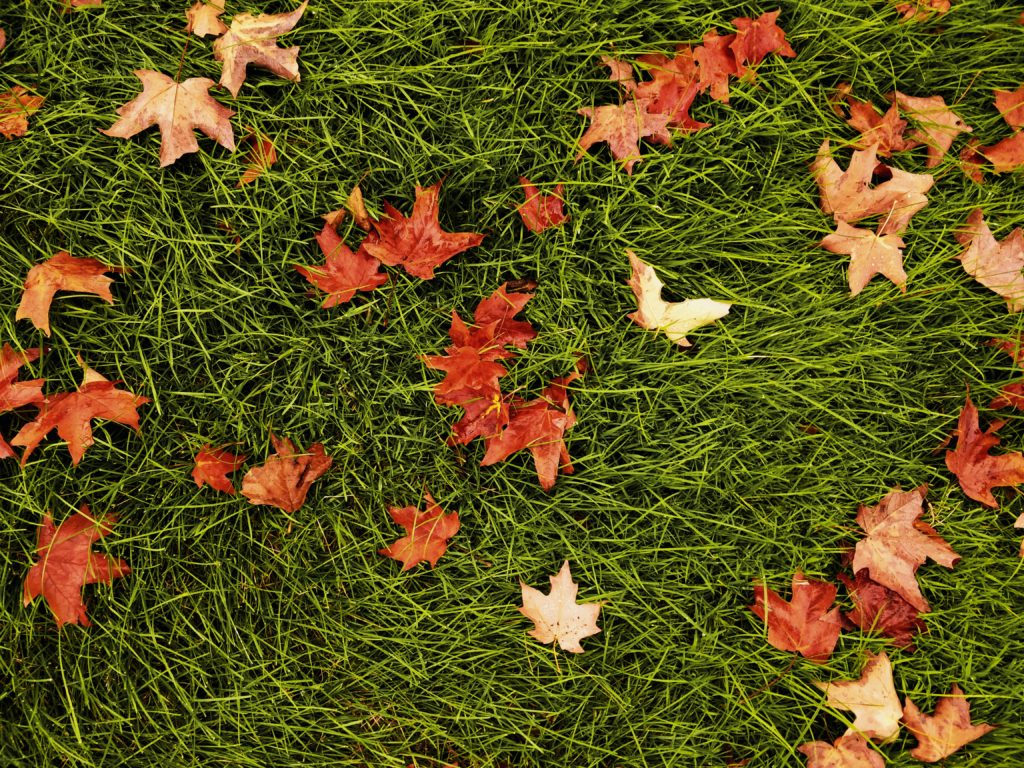
It might not be well known, but did you know that spring and fall are the best seasons to lay sod? It’s typically assumed that due to the warm weather, summer would be the optimal time, however this isn’t true. Sod can be laid anytime throughout the growing season, but spring and fall tend to be the best seasons for it. While it’s important to avoid laying sod in freezing temperatures, the Okanagan offers some mild fall conditions which make sod installation very convenient this time of year. September is an optimal month to get landscaping projects finalized, because this is the last month of “predictable” weather.
Laying sod past September isn’t a large issue, however you would be in favour of the unpredictability of snowfall and freezing temperatures, which can affect the chances of sod rooting into the soil. This isn’t an end all however, as rooting can proceed come spring, however, that’s why we stress sod installation this month for ‘end of season’ application.
In this blog, we will give you a few things to consider for end of season sod installation – Let’s get started!
Cooler Temperatures
In a previous blog, we mentioned how beneficial laying sod in the fall was. One of the largest benefits is the cooler temperatures. Contrary to popular belief, the cooler temperatures associated in September help prevent sod from overheating and drying out. This is also a great opportunity for sod to develop roots prior to the winter season.
Not only do these mild temperatures benefit the sod, but they also benefit you!
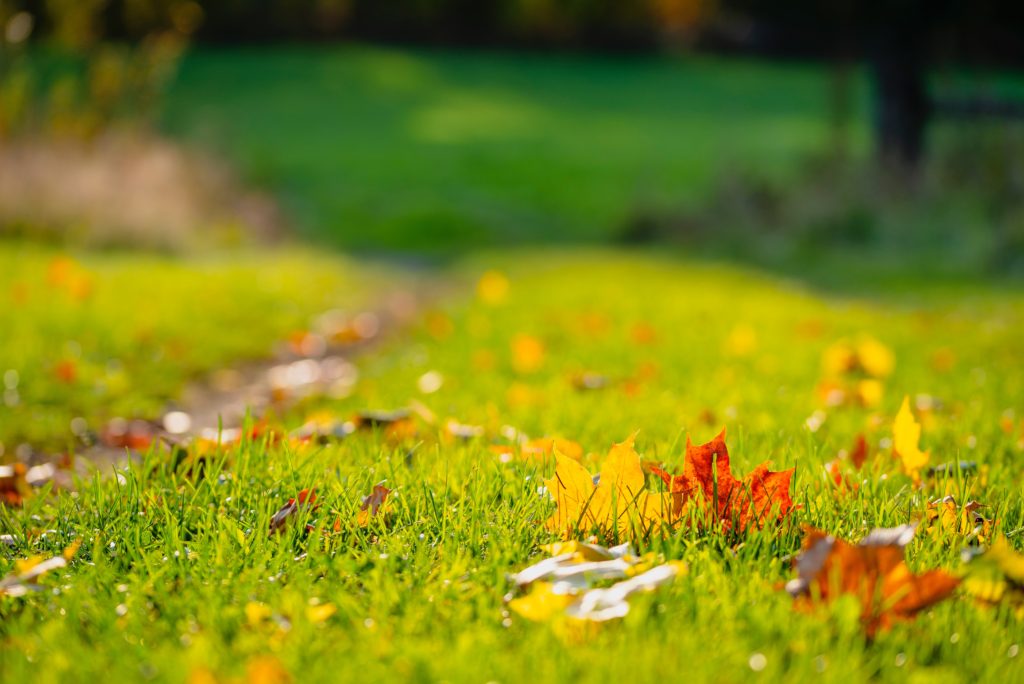
Working on landscaping projects has never been easy throughout fall. Without the demands of the intense heat during summer, the cooler temperatures make it easier for working conditions. Keep in mind that it is too late to plant seeds, but laying sod is optimal for the month of September.
Less Care Required
Thanks to the cooler temperatures, lawns require less work. We mentioned in our previous blog the demands of sod in hot temperatures.
However, in the current season, sod doesn’t dry out and the risk of roots not developing is lessened. Compared to summer, the amount of water needed in the fall is greatly reduced. Grass maintains moisture easily in fall, and due to that, has a greater survivability compared to summer.
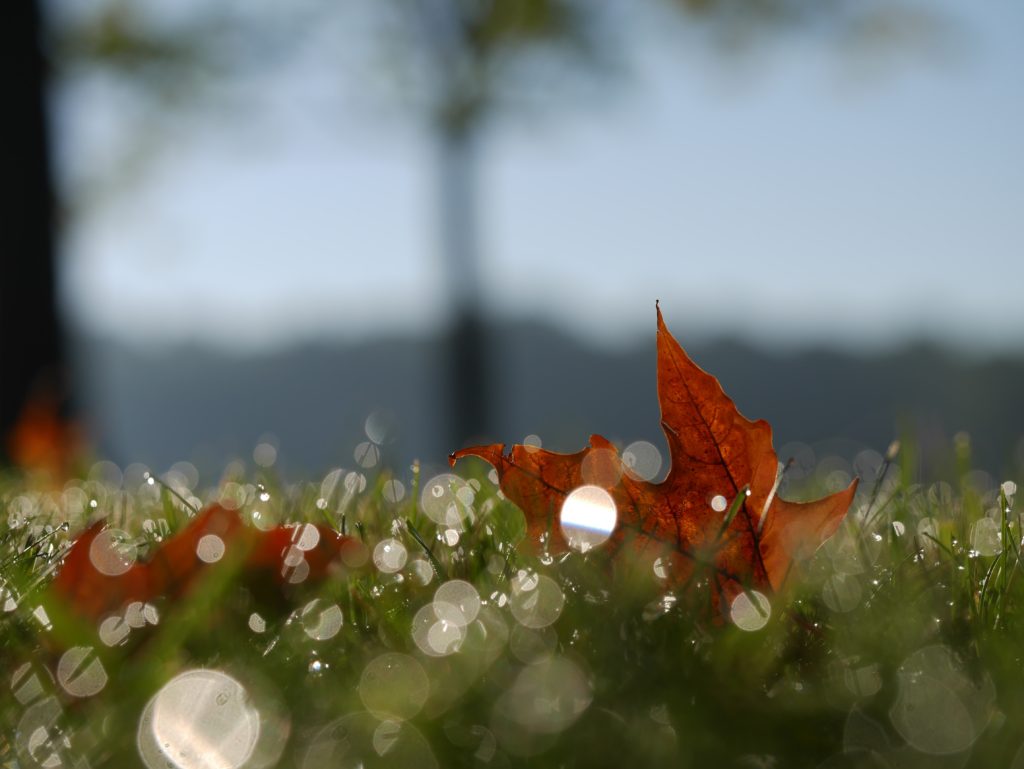
The best advantage to laying sod during the fall season is dormancy, or “set it and forget it”. Dormancy is easy to achieve by laying the sod and letting it root before winter kicks in. This allows it to be dormant throughout the winter, and grow in the following spring.
Timing is Key
While laying sod during the fall is an optimal time to finish landscaping projects for the season, it’s important to utilize September as the final month for sod installation. Sod typically takes up to 6 weeks to finish developing a strong root system and 2 weeks to develop a shallow root system.
Because of this, you need to give your sod adequate time to form and develop roots.
Timing is important here.
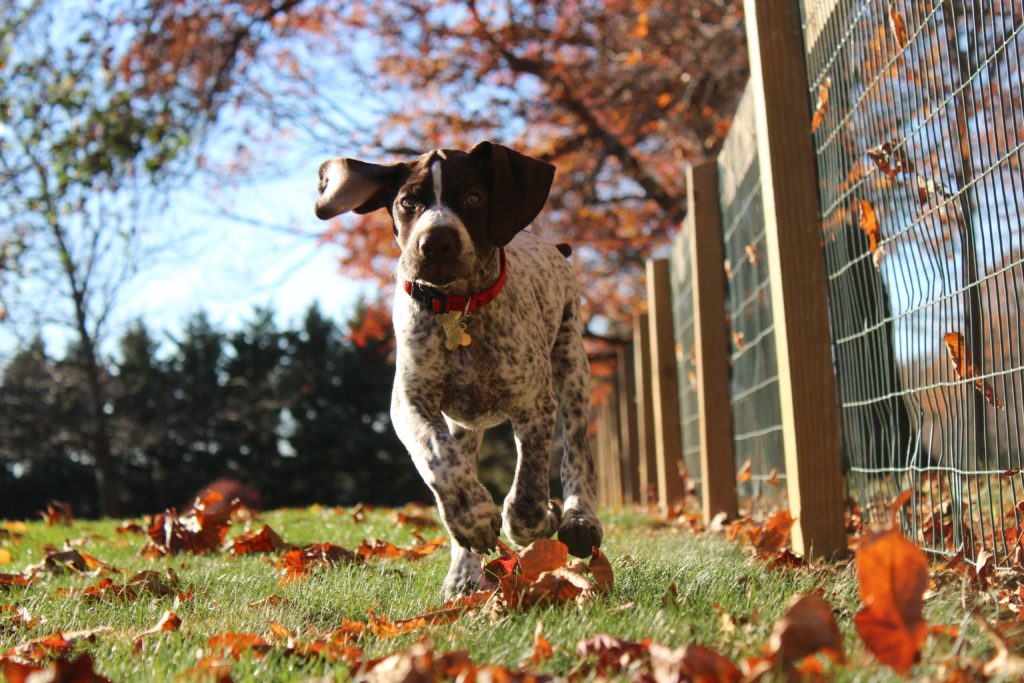
Give your sod approximately 4-6 weeks to root before the ground will freeze for the winter. Within the Okanagan region this means taking advantage of September to install sod. Once the ground is frozen you lose the opportunity to let your sod root – so act fast this month!
Conclusion
Fall is a great time to lay sod and finish those landscaping projects for the year. It’s important to utilize the end of season for fall sod installation – and be of course mindful of the winter to come. Afterall, the goal is to have beautiful growing grass for next spring and summer!
At Lavington Turf Farms, we understand the importance of end of season sod installation. That’s why we still have sod available for your end of season landscaping projects. We offer customisable, drought tolerant turf that holds up in fall temperatures.
Service Area
We proudly serve the following areas: Vernon, Coldstream, Lumby, Salmon Arm, Sorrento, Revelstoke, Kamloops, Kelowna, Penticton, Kootenays, and Caribou, all the way to the USA Border.
For more information or a free quote for your project, please visit this page on our website.
Okanagan Grass in Dormancy
Introduction
Within the Okanagan, home owners have the luxury of enjoying mixed temperatures all season, with the added benefit of cold winter months and hot summer months. With that being said, the unreasonably hot and dry summers take its toll on plant life – giving long hot days, with little to no rain. As well, the long winter months mean your grass manages with heavy snow falls, and below freezing temperatures. However, the brown and dry grass homeowners are left with is completely normal and should have no cause for concern. In fact, your grass isn’t dead, it’s simply dormant!
It’s quite a common question at Lavington Turf Farms; We have customers who aren’t used to the Okanagan summers or winters, and are more used to green grass year round. In this blog, we will take you through grass dormancy; the difference between dead or dormant grass, how your lawn will be affected, and tips we gathered from years within the industry to care for dormant sod.
That being said, let’s get started!
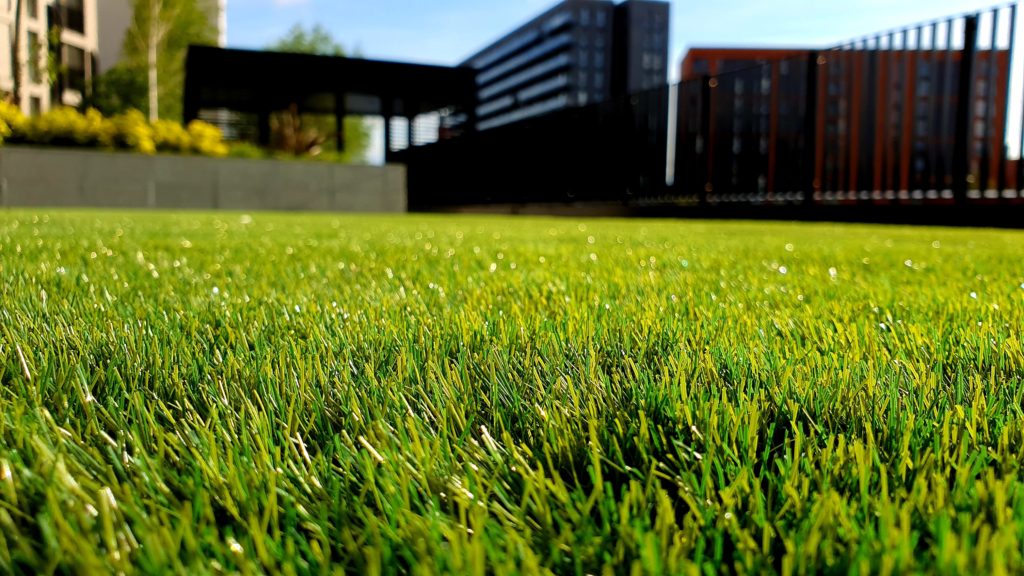
Difference between dead and dormant grass
The sight of brown grass can be confusing for homeowners. It’s important to know what caused the discoloration and in the best case scenario – if your grass is still alive. There are a few simple differences in dead and dormant grass, and if the grass is dormant, you will be completely capable of having lush green grass again.
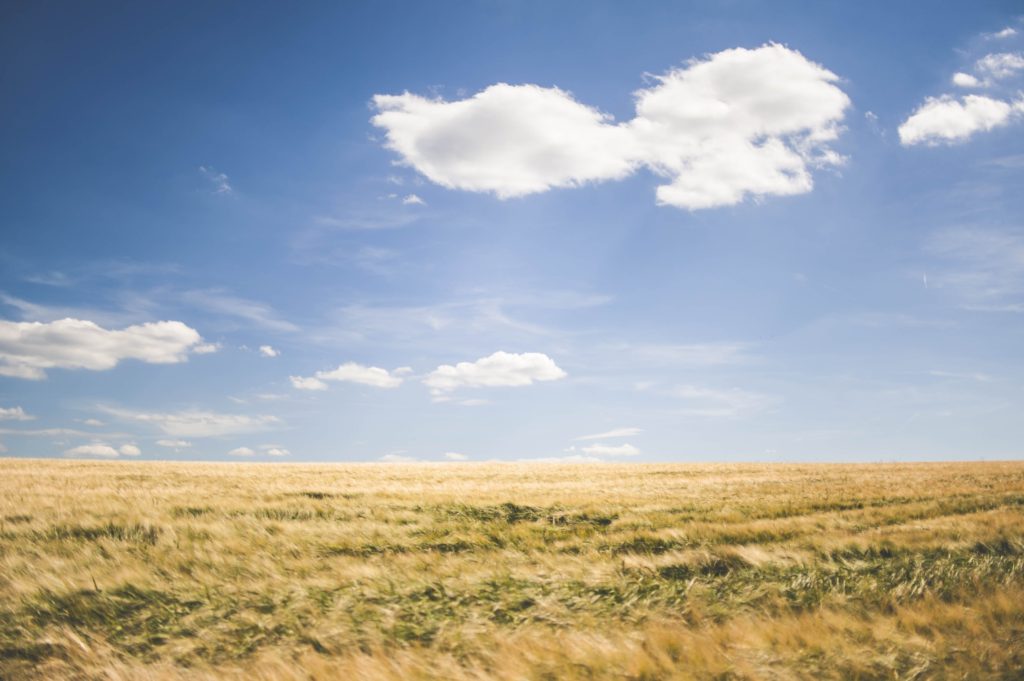
The simplest difference would be testing your lawn by pulling on a small section of brown grass to test resistance. Simply put, if you have no resistance and the grass pulls out easy – it’s dead. Another visual difference in dead and dormant grass, is that typically, dormant grass will be consistent. By this we mean, if your whole lawn is brown in colour it’s most likely dormant.
Of course, if there are small patches of brown grass inconsistent with the rest of the lawn, then those areas are most likely dead.
Remember to act consistent and attentive with watering, and inquire to a professional if you need help deciphering between dead or dormant grass.
Grass in dormancy
Now that you know your grass is dormant, let’s talk about how your grass is revived out of dormancy. As mentioned earlier, when your grass is yellow or brown in colour and looks as if dead, there is actually a part of the root that is still intact; the crown. This inner piece remains alive and will regain life again once reactivated by moisture. When this happens, the grass will begin to transition into green lush grass again. Of course, this is greatly benefited if you have consistent waterings and treat your dormant grass with care.
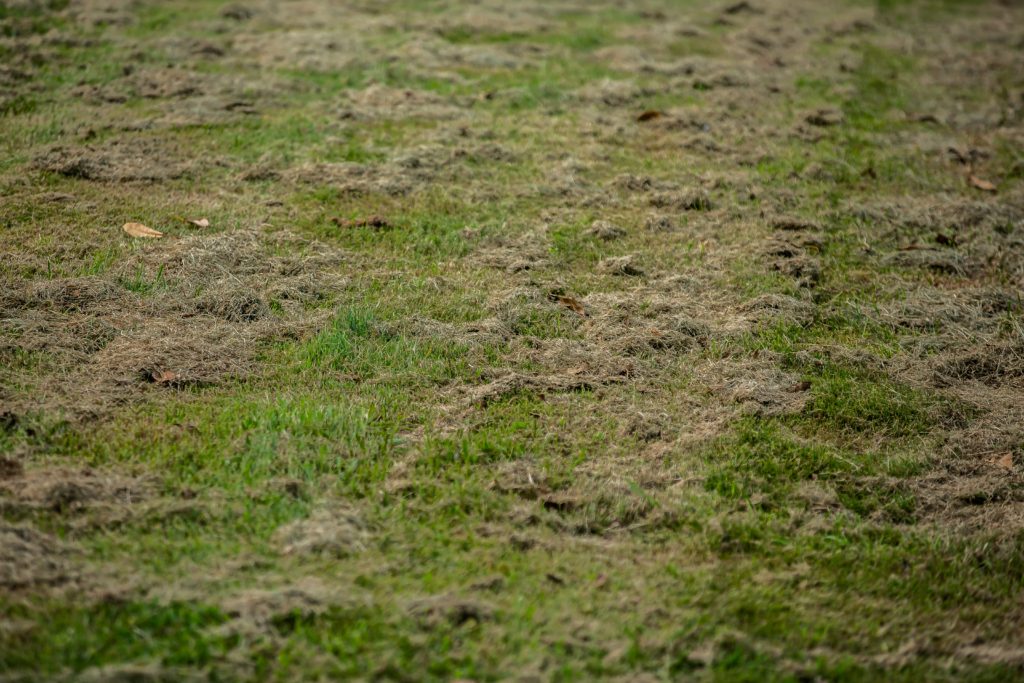
Dormant grass is in a vulnerable state, so limiting the traffic on your grass while it recovers is ideal for your grass to bounce back properly. Besides damage caused from traffic, your vulnerable lawn is susceptible to weeds when dormant. Be sure to monitor your grass frequently during dormancy and trim weeds appropriately early in the spring season.
Laying dormant sod
Did you know that it is possible to lay dormant sod in the off seasons? It’s actually beneficial to install dormant sod grass in the early winter months to prevent erosion and mud. If monitored and treated correctly, your sod will grow roots in the early spring months, and you will have the full benefits of a healthy green lawn. When laying dormant sod, it’s important to follow a proper watering schedule, and be alert for cold dry weather, which has a high chance of drying out the root of the sod.
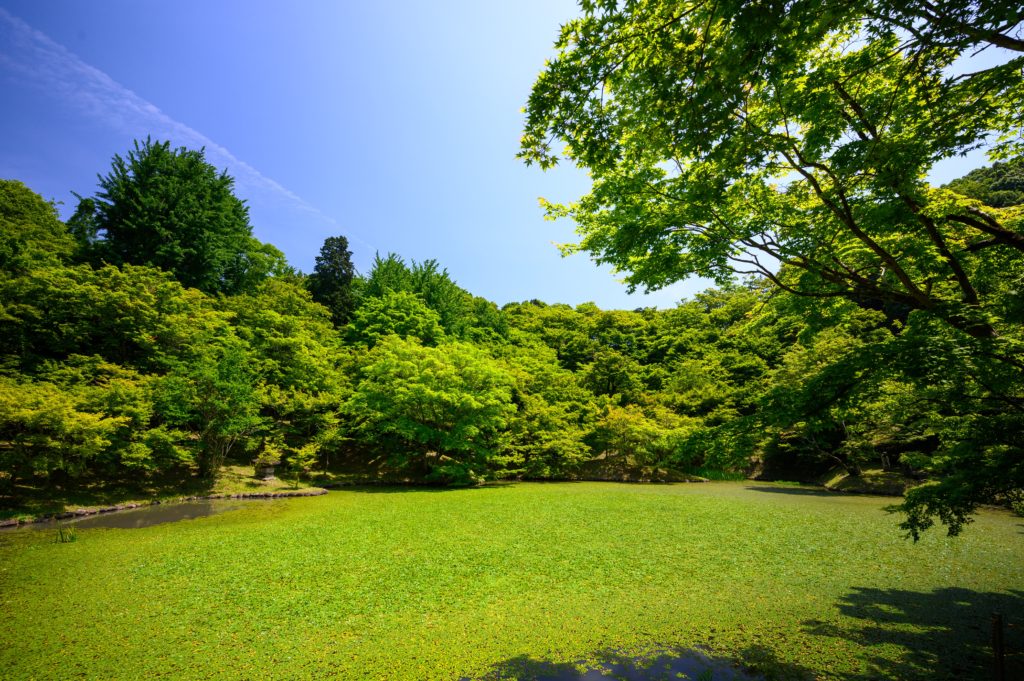
Dormant sod does require less water than previously laid summer sod – but you should always be mindful of the conditions year round, and water accordingly, to ensure roots form for spring. Herbicides should also not be applied until spring months once the sod is rooted.
Conclusion
Now we hope you feel confident and comfortable knowing that your lawn can, and will go dormant during certain seasons throughout the year, but that should give you no reason to panic. Brown grass is common and not an issue – as long as you treat your dormant grass well, then the likelihood of having green lush grass for future spring and summer seasons will happen for you. If at any point you require help determining if your grass is dormant or dead, or if you need sod for new sections of your lawn, contact us for a quote today!
At Lavington Turf Farms, we are always here if you have any questions about your projects. We can customize our sod to fit your needs, and our drought tolerant turf will always fit the conditions.
Service Area
We proudly serve the following areas: Vernon, Coldstream, Lumby, Salmon Arm, Sorrento, Revelstoke, Kamloops, Kelowna, Penticton, Kootenays, and Caribou, all the way to the USA Border.
For more information or a free quote for your project, please visit this page on our website.
The Best Time To Lay Sod in The Okanagan & BC Interior
Family owned and operated since 1988, we have been providing top quality sod and turf for many applications including: residential, golf and sports fields. Our experience comes from years of practice – and our roots run deep within the industry. With all that being said, to put it simply; we know turf/sod and the Okanagan pretty well.
With Spring fast approaching – it’s no question that residents within the Okanagan & BC Interior have been planning new projects that could include; beautiful lawns for their yards, new golf courses or creating/expanding a sports field! But how do you know when is the right time to lay sod? While it seems pretty straight forward, there are better times to lay sod to ensure you end up with lush, low-growing, thick grass.
Let’s get rolling!
When is the best time to lay sod in the Okanagan?
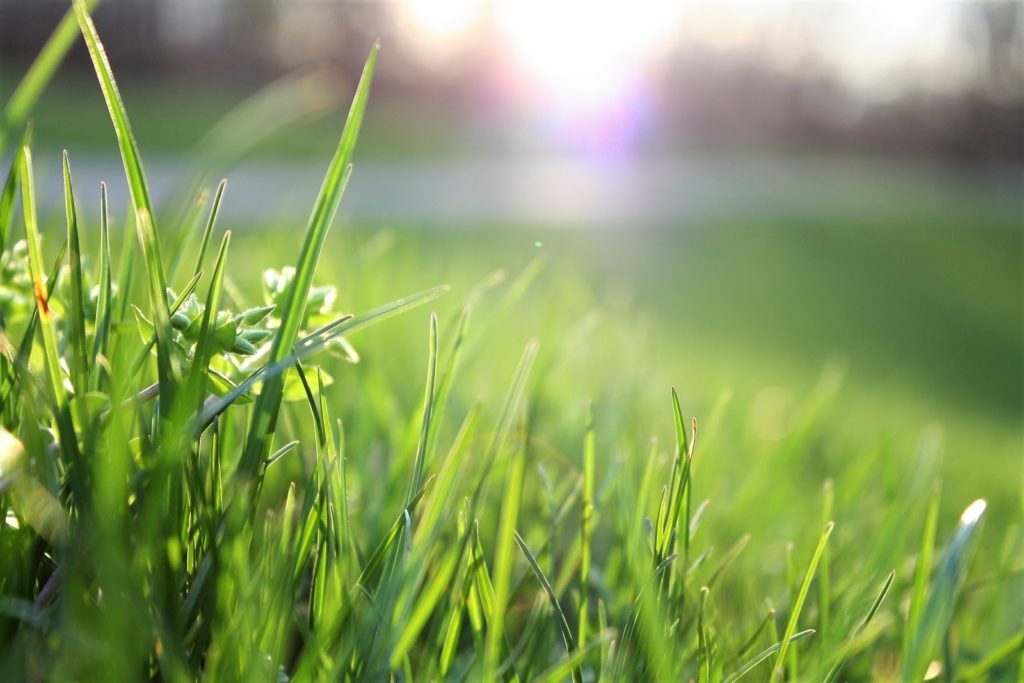
Due to the warm summers with low humidity, and the mild winters; the Okanagan’s semi-arid climate is the perfect location to start your sod/turfing needs. Within Okanagan and Interior British Columbia, you can install turf any time from early spring to late fall.
Spring to late fall is an ideal time range because that’s when the ground can be easily worked with, and tilled to prepare for perfect sod application. That being said, we strongly believe that with the right preparation, there is no need to wait for the “right” season to put on your lawn!
The right preparation means ensuring the ground is in it’s best condition to retain sod, measuring your sod to ensure it lays correctly, and keeping up with the sod’s maintenance to ensure you produce long roots and beautiful grass. For more information on getting started, this page will let you know everything you need about sod preparation, and maintenance.
Tips for laying sod in the Spring
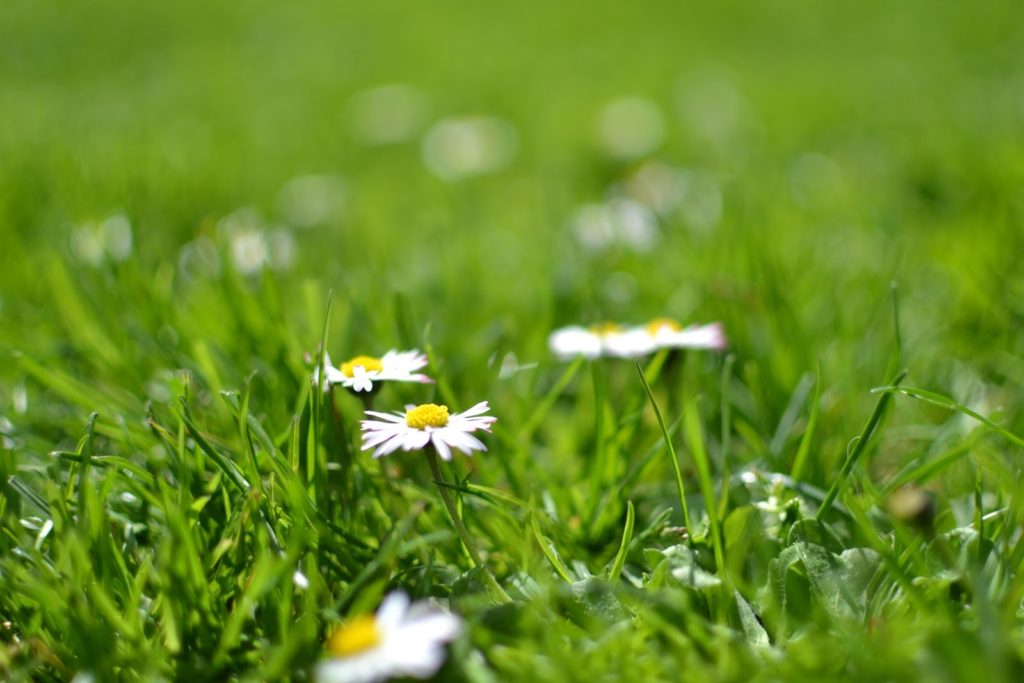
Spring is a fantastic time to lay down some new sod – but the warm to cool temperatures can come with a few drawbacks.
The occasional rain fall will greatly help the sod quickly root – but be warned, too much rain means muddy soil, which can make it more challenging to apply sod. We recommend not applying sod after a full rainfall – but being strategic with the application. Damp soil is great, and a huge advantage for your sod to quickly root – just be sure to act fast, and not wait for your soil to turn to mud!
With the transition from winter to spring – comes the expectancy of morning frost as well. Be sure to not walk too much on the new sod after frost, or else it could damage your new grass. For the spring, nutrients, sunlight and rain are abundant – it is an excellent time to lay your sod down.
Tips for laying sod in the Summer
As mentioned before, laying sod can be done the majority of the year – however, there are some important notes to keep in mind when laying sod in the summer. The Okanagan summers can typically be quite hot, and while it may be tempting to water your sod often – be sure to not over water it. Ideally, you will want your soil to be damp 3-4 inches below its surface.
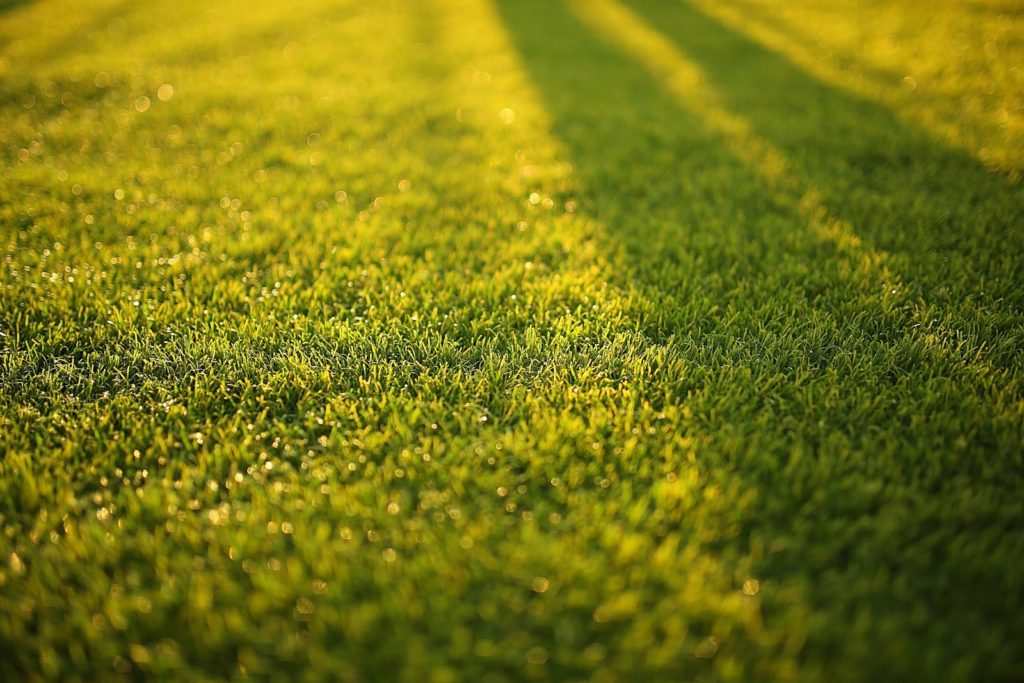
Due to the nature of the summer temperatures – its most ideal to water your sod in the early mornings, and late afternoons. These times give the water more chances of soaking directly into the soil – watering during the day could mean, on those hot days, the water evaporating before ever reaching your soil, resulting in your sod not rooting.
Tips for laying sod in the Fall
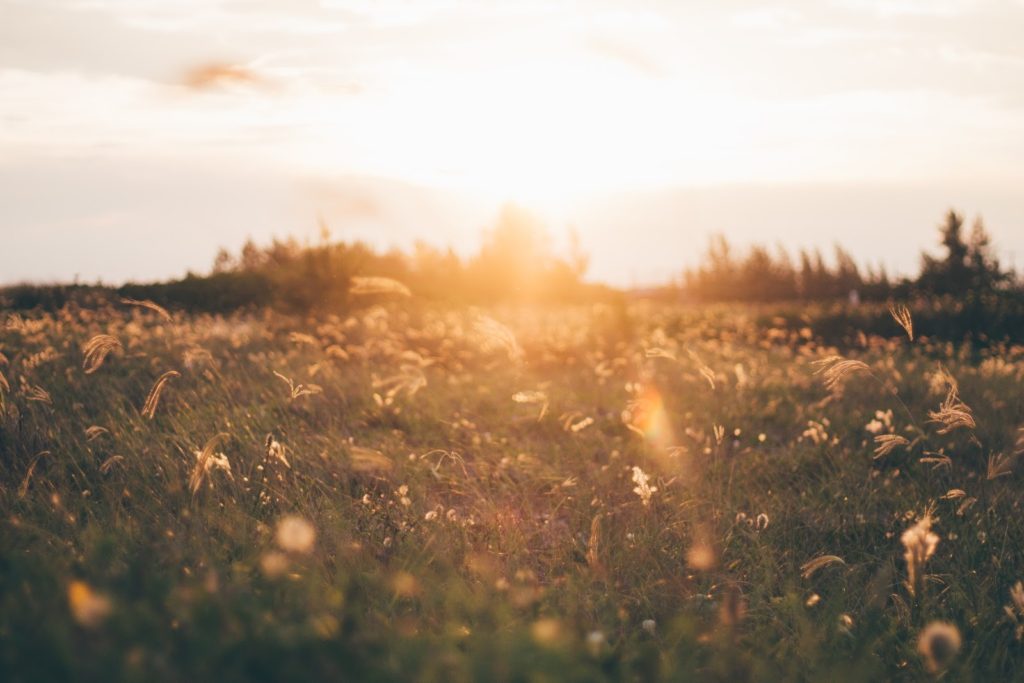
While the fall within the Okanagan can be unpredictable and range from warm to cold – it’s still an excellent, and most times, ideal season for laying sod! Keep in mind that laying sod shouldn’t be done in below freezing temperatures – but rather, on those warmer days.
Fall is the preferred season to lay sod due to cooler temperatures; meaning less risk of the sod overheating and drying out. That being said, it’s still a good practice to water your sod often – but compared to summer months, you won’t have to fear your sod drying out.
Your sod will love the cooler temperatures, but so will you – these cooler temperatures also make for great working conditions!
Conclusion
Whatever your sod or turfing needs are – it’s always a great time to install within the Okanagan. While each season supplies its own advantages and disadvantages, you are always guaranteed fantastic results and growth following our best practices. After all, the success of your lawn really comes down to the preparation you have for the elements – rather than the elements themselves.
At Lavington Turf Farms, we want you to have the best experience possible when applying your sod, and end up with the best results. Our quality sod is perfect for battling the elements to give you lush, low-growing grass any time of the year.
The seasons can be unpredictable, but Lavington Turf Farms isn’t. From our field to your yard, we offer fast delivery and the ability to pick up at the farm direct.
For more information or a free quote for your project, please visit this page on our website.
Welcome to Our Brand New Website!
After months of hard work, we are excited to finally announce the launch! Our goal was to create an informative and welcoming website. The website provides our clients with an easy way to learn about us and our services.
We hope you enjoy and find our new website useful. If you have any comments or questions for us, please feel free to get in touch using our contact page and we will be sure to get back to you.
Lavington Turf Farms